Introduction:
Yuèyá chǎn 月牙铲 (Yuet Ngah Chahn, in Cantonese, Crescent Moon Shovel) or "Monk's Spade" is one of the classic Shǎolín 少林 weapons which was later inherited by our style. It has its origin in the Fāngbiàn chǎn 方便铲, the shovel as a tool, which has a metal sheet only at one end.
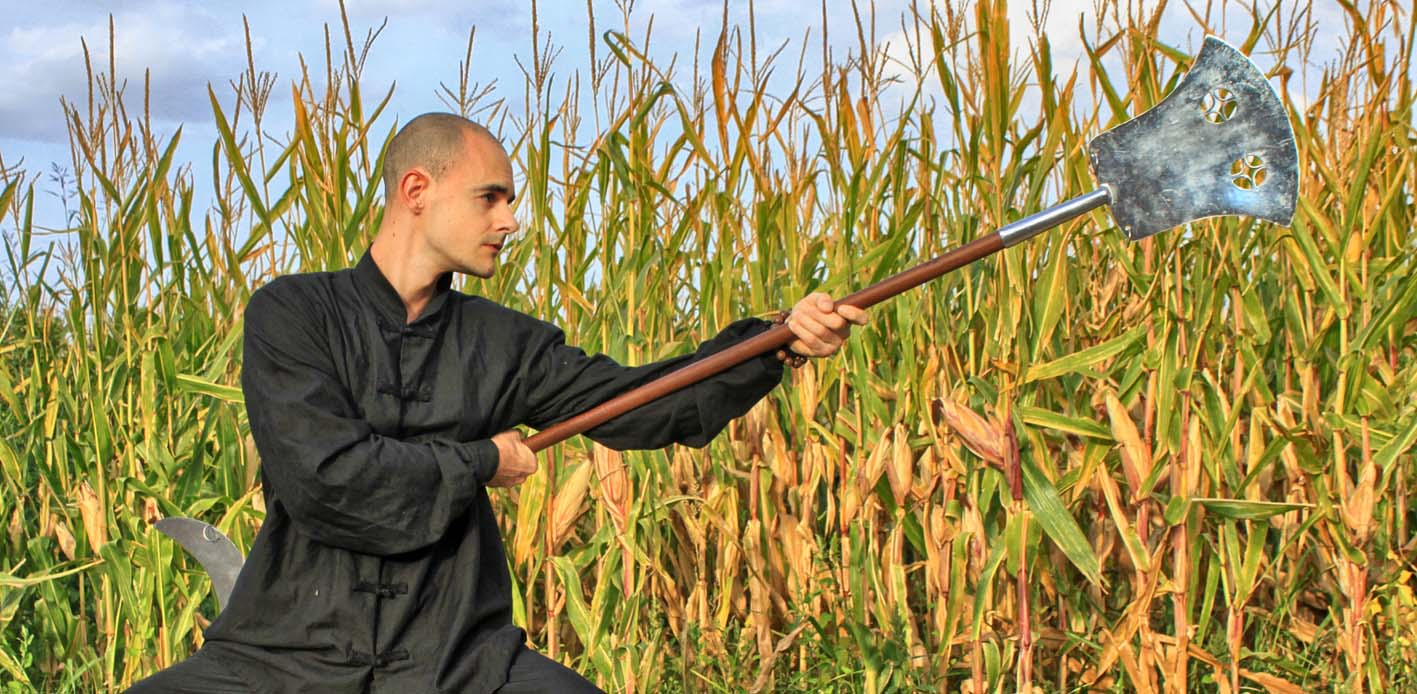
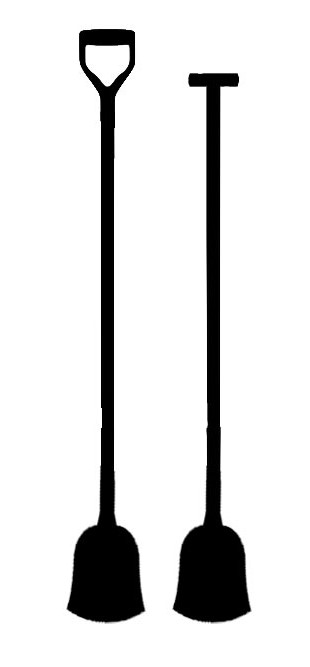
Spades with D- and T-shaped ending shafts.
Origins:
In ancient China, funeral ceremonies were carried out by religious, Buddhist or Taoist orders, as a service provided at a price. However, humble people could not always afford all the costs of the death of a relative, or had a nearby temple in the locality, so the task was left to errant monks, with whom the families came to some kind of agreement through which the funeral service was provided in exchange for food, water, shelter or, if they could afford it, some money.
Added to this was the fact that, sometimes, the monks found dead travelers or abandoned bodies on the roads. In that case they were obliged to give them burial. Therefore, the monks traveled throughout the Chinese territory with a shovel, which in addition to serving the essential purpose of digging the graves, could be used as a cane and even as a useful weapon to defend themselves against bandits.
This tool is the Fāngbiàn chǎn, a shovel with a long shaft whose ending at the rear end was a T or D-shaped handle. The length of the shovel could reach 2 meters, which allowed to dig a hole without needing to get inside it. The end in T or in D served to push the shovel hard into the ground and, martially, to hit and hook with it.
Later on, a sheet of metal in the shape of a crescent moon was added at the end where the handle was; the result is the Yuèyá chǎn, a full-fledged weapon, since by adding the crescent in favour of martial effectiveness, the utility of the T-shaped handle was sacrificed to drive the blade when digging holes. This crescent moon was used as a fork to defend itself against wild animals, placing it against its neck.
Monks were obliged to bury the corpses that found on their way.
Parts of the monk's spade and martial uses:
1. Shovel:
The front edge of the shovel is rounded or pointed, and sharp; its original purpose was to dig. The lateral edges are also sharp at their end in a peak, but they become thicker as they approach the shaft of the weapon. These lateral edges allowed to penetrate in harder ground or to cut roots and to hook them with the tip to remove them from the hole. Finally, the blade is attached to the pole at its rear edge, straight and not sharp.
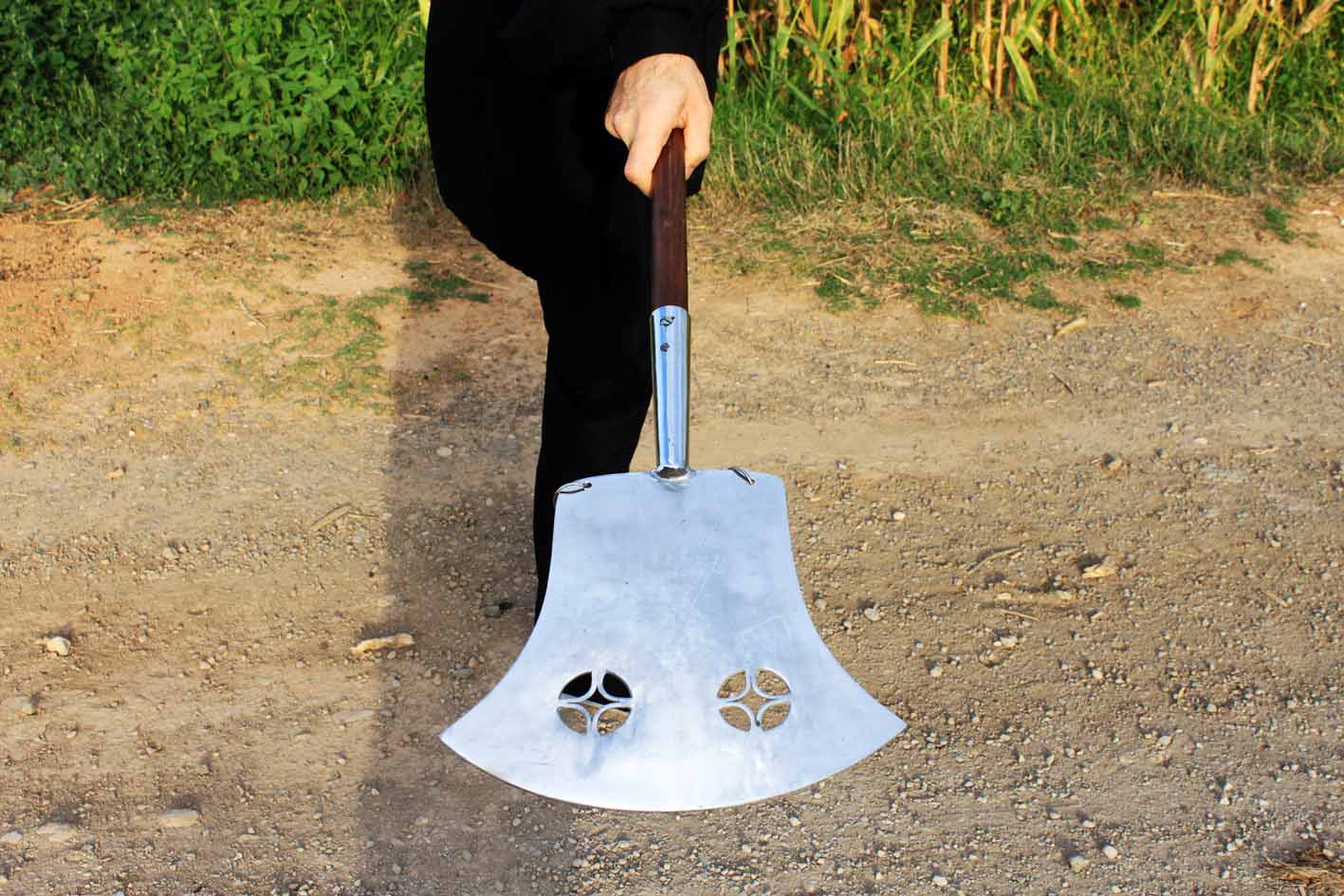
Among the martial techniques that employ the shovel are:
- Thrust, using the front edge of the blade.
- Cut and tear, using the lateral edges ending in a peak.
- Hit with the blade flat.
- Hook and pull, using the rear edge of the blade at its junction with the shaft.
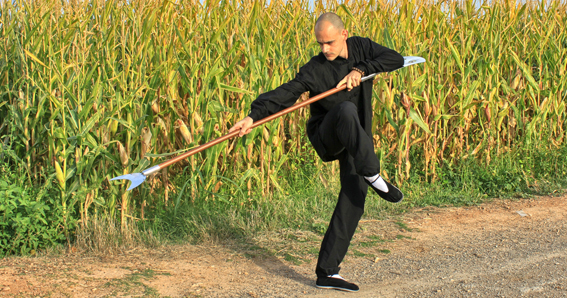
2. Shaft:
Its obvious function is to hold the shovel to handle it at a long distance. We have already mentioned that the length of the pole exceeded one and a half meters to be able to dig without being inside the hole.
Martially, the pole can be used to block and deflect in various ways, or also, at close range, to push the opponent with the center of the pole.
3. Crescent moon:
The crescent moon has a fully martial and defensive function, since it was not in the original shovel as a tool. Its use is mainly focused on stopping or blocking attacks, being able to trap the opponent's weapon to disarm it, although of course it can also attack various parts of the body. It can also be used to hook and pull, in the same way as the back edge of the blade.
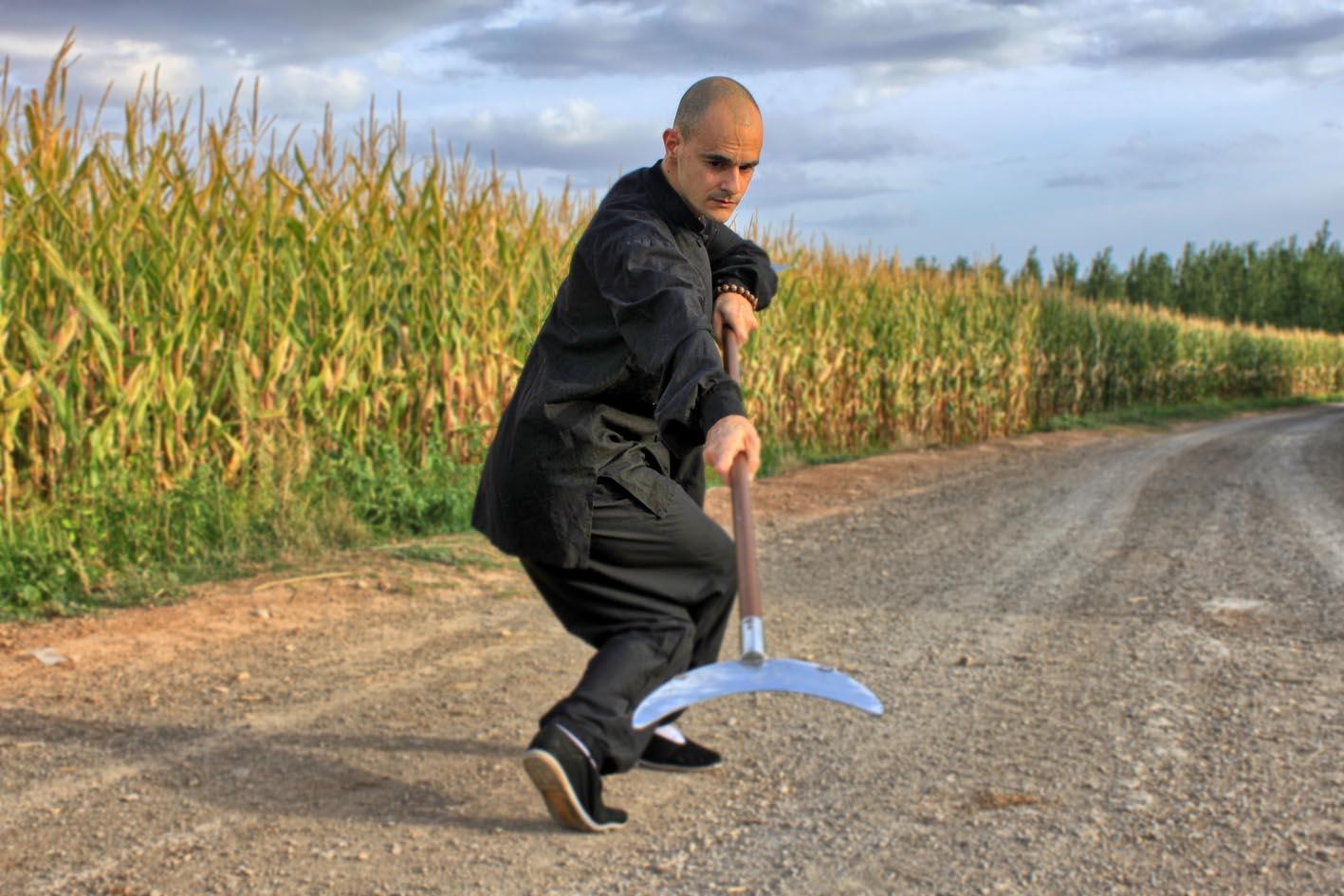
We have, then, as a whole, a very complete and versatile weapon. For today's practitioner it means good weight training, which will improve the speed and power of empty hand techniques. In addition, the defense techniques of the monk's spade can be easily transferred to other similar tools. Finally, its study and improvement involves deepening the Chinese martial tradition and contributes to the maintenance of this valuable tradition over time.
